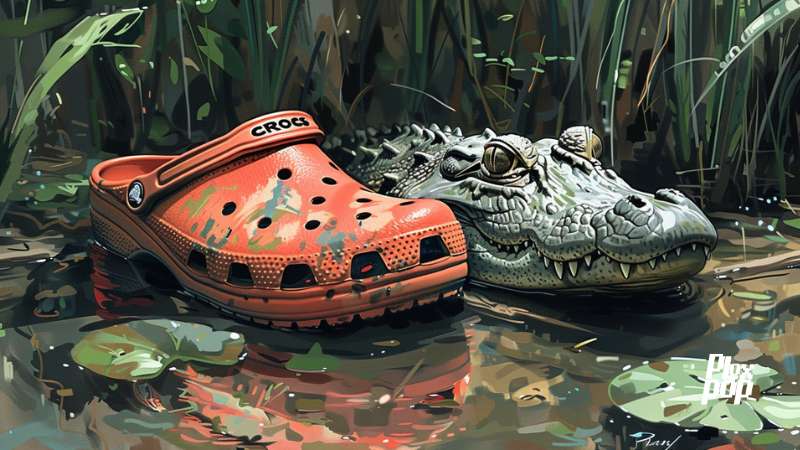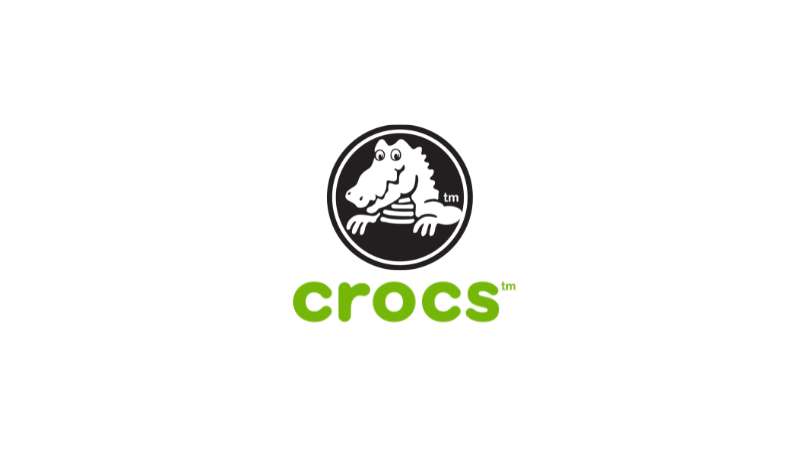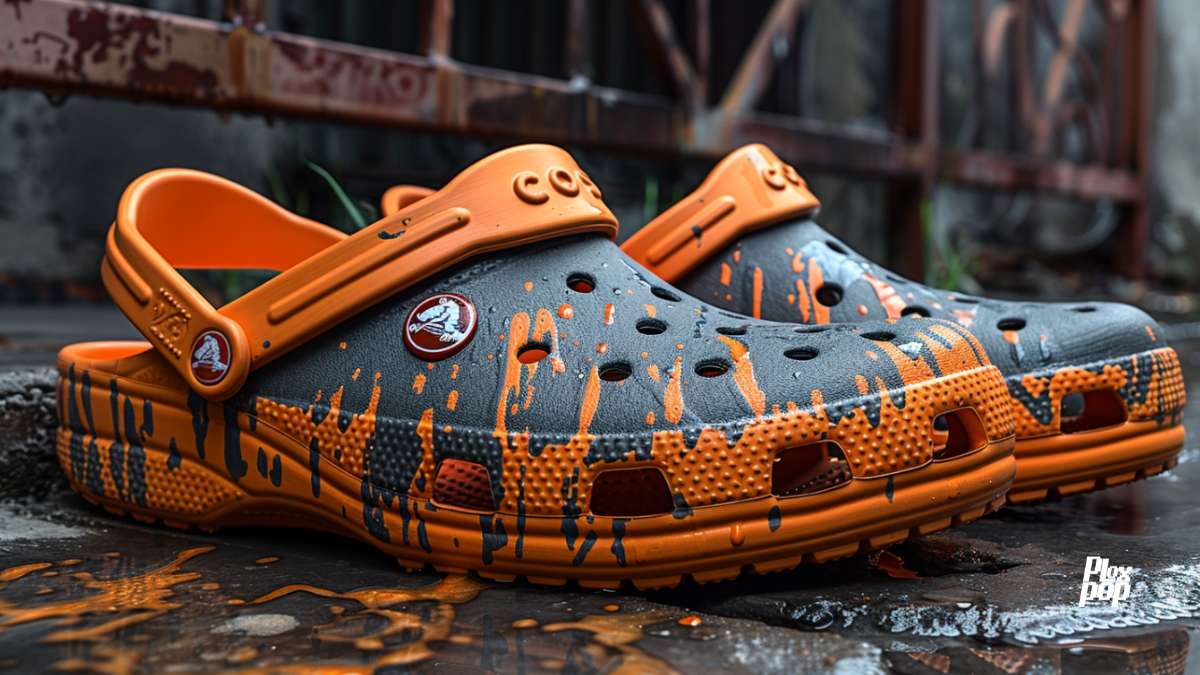Crocs: a name that evokes images of colorful, uniquely designed footwear that embodies both comfort and luxury. They are very popular now, but can you believe that people once hated them? They were first made for people who worked on boats.
So how did these shoes, once called ugly, become so fashionable and loved? Crocs have come a long way, turning from something no one wanted into a stylish must-have.
What exactly are Crocs?
Crocs Inc., based in Colorado, USA, is a company that makes a unique type of footwear known as Crocs. These shoes are famous for their foam design and come with 13 holes to keep your feet cool and comfortable. You can also customize them with fun accessories called Jibbitz. Crocs are crafted from a special material known as Croslite, made from a type of polymer called ethylene-vinyl acetate. This material is tougher and more hygienic than rubber or plastic, it resists water, prevents bacterial growth, and offers up to 40% more shock absorption, making Crocs both durable and comfy.
Andrew Reddyhoff, who worked at Foam Creation company in Quebec, Canada, was the first to design what we now know as Crocs. He designed a type of shoe perfect for being around water — these were comfortable, didn’t slip, and were light enough to float. Initially, these weren’t called Crocs; they were just known as boat shoes. Because they were so comfortable, people who worked on boats loved them and they became very popular. Over time, these boat shoes developed into the Crocs brand that we know today.
While thinking about what to name their footwear brand, the founders unexpectedly chose the name ‘Crocs.’ They noticed that from a certain angle, the front part of the clogs looked like the snout of a crocodile. This inspired them to name the shoes’ Crocs.’ Coincidentally, this name sounds similar to ‘Croslite,’ the special material used to make the footwear.

How Crocs Got Started
In 2000, three friends, Scott Seamans, Lyndon Hanson, and George Boedecker Jr, went on a trip that led to the creation of Crocs. During their discussion about starting a new business, they were inspired by a unique type of boat shoe worn by a boat driver during a Caribbean journey. The shoe was lightweight, extremely comfortable, and different in appearance. They were intrigued by its potential and thought about making similar shoes using a special material called Croslite. They got more information about the shoe, considered buying a patent, and took steps to start making their own. They acquired Andrew Reddyhoff’s design from Foam Creations in Canada and officially formed the Crocs company in 2002.

At first, the founders of Crocs had many doubts about the success of their footwear because of its unusual design with lots of holes and its bold colors. Despite these doubts, they began producing the Crocs shoes and launched their first model called ‘The Beach’ in 2002. They introduced these shoes at a boat show in Fort Lauderdale in Florida, America. At a time when sneakers, boots, and other types of shoes were popular, they wondered if anyone would buy such a strange-looking shoe. However, all their concerns were wiped away by the positive response ‘The Beach’ received. They quickly sold all 200 pairs they brought to the show and began making more. Over time, they introduced their clogs at various shows and events, gradually gaining acceptance. Although there were some initial sales struggles, people began to embrace the clogs for their unique design and unmatched comfort. Crocs attracted not only boaters but also the general public and even celebrities, becoming a favorite across different walks of life.
As the clog shoe gained popularity and captured the market, Crocs started launching more footwear and focused on rebranding. They released shoes in various colors and designs. In 2005, Crocs updated its logo and launched its first advertising campaign called ‘Ugly Can Be Beautiful,’ which was a big hit and prepared by an American advertising agency. This campaign helped pave the way for Crocs’ entry into the stock market, and in 2006, Crocs was listed on NASDAQ. They initially raised $200 million, which helped the company expand internationally beyond the U.S., opening outlets in over 40 countries. As the market expanded, Crocs began introducing new products like boots and sneakers, tailored to modern needs and fashion trends, without compromising on quality.
Over the course of 20 years, Crocs has only changed their logo twice. The Crocs logo includes the word ‘Crocs’ along with the image of a smiling crocodile. Initially, in 2002, the logo also featured the phrase ‘Get a Grip’ and was in green and black colors. In 2005, they updated the logo to what it is now: the word ‘Crocs’ is in green and the crocodile in black. They removed the phrase ‘Get a Grip’ from the logo.

In 2006, Crocs launched a special line called Crocs Rx specifically designed for healthcare professionals. That same year, Crocs also acquired a company called Jibbitz for ten million dollars. Jibbitz, started by the husband-and-wife team Sheri and Rich Schmelzer, made snap-on accessories for the holes in Crocs shoes. When Crocs shoes with holes became a hit, Jibbitz, which offered mini faux flowers, buttons, and other decorations, also gained popularity. Recognizing the business potential, Crocs bought Jibbitz just a year after it started. Besides the initial ten million dollars, Crocs promised to pay an additional ten million if Jibbitz met certain profit targets.

By 2007, Crocs had reached the peak of its fame and profits, becoming one of the fastest-growing companies in the world. At that time, Crocs’ market capitalization was six billion dollars, an achievement they reached in just five years. That same year, Crocs opened their first retail store in America, and soon after, hundreds of Crocs retail stores opened worldwide. In 2007, Crocs also expanded their product range beyond just using Croslite material. They acquired a company that made footwear from leather and vinyl acetate for 1.75 million dollars, which allowed them to increase their production and diversify their market offerings.
However, Crocs faced an unexpected crisis during 2007-08. The company’s revenue dropped, and its stock price fell by 30%. As part of cost-cutting measures, hundreds of employees were laid off, and around a hundred retail stores were closed. The production of less popular footwear was also halted. Crocs adopted several strategies to manage the crisis, including changing its leadership. As part of their revival efforts, in 2010, Crocs re-launched in the market by collaborating with various fashion brands. They introduced innovations such as the ‘You by Crocs’ customization system, stretchable materials, and new summer collections. During this period, Crocs also launched footwear designed for athletes, including a notable shoe called Crocs LiteRide. Despite these innovations, Crocs initially struggled to regain its market position.
Prince George’s Crocs Spark Market Surge
During their recovery efforts, Crocs gained significant attention when Prince George was seen wearing blue Crocs. In 2015, photos of Prince George at a charity polo match with his parents, Prince William and Kate Middleton, went viral. He was wearing blue shorts, a blue sweater, and a V-neck cardigan along with his Crocs. The image of George in his Crocs became popular on social media, showcasing not only comfort and convenience but also style in the royal family’s wardrobe. This was not a small milestone for Crocs, as it gave the brand a regal endorsement. Following this royal appearance, Crocs experienced a significant market surge, with a notable jump in sales within a week.

In 2016, Crocs reached a significant milestone in their business by selling fifty million pairs of footwear since their inception. They celebrated this comeback in the footwear market by collaborating with celebrities to boost their sales. Crocs even partnered with Justin Bieber, and their limited edition shoes became a hit. By 2017, Crocs had sold approximately three hundred million pairs of shoes. Crocs embraced the ‘ugly fashion’ trend and were widely accepted around the world. People of all ages, from youth to adults, sought out Crocs for their comfort and convenience.
In 2018, Crocs closed its manufacturing plants in Mexico and Italy. The following year, like many businesses, Crocs was impacted by the COVID-19 pandemic. However, they expanded their business through online platforms. During the pandemic, Crocs donated hundreds of thousands of shoes to healthcare workers worldwide as a gesture of appreciation for their fight against COVID-19. Although Crocs described this as a tribute to healthcare workers, it was also one of the major marketing strategies adopted by big brands during the pandemic.
Since 2020, Crocs has reported a double-digit percentage growth in sales each year. Crocs has become a best-selling footwear brand on most lifestyle online platforms. Today, Crocs has a net revenue of ₹29,509 crore. As Crocs’ style became popular, many major global footwear brands have imitated the clog style. Nowadays, even in the small streets of India, you can find shoes similar to Crocs’ clogs available at low prices.
The Most Hated Product in the World!
As Crocs’ popularity and fame increased, the number of critics who mocked their unique design also grew. Clog shoes have fans worldwide, but they also have many nitpickers. The main criticism is about their odd appearance. Critics say that Crocs look like something a clown would wear and are never considered stylish.
While Crocs have become increasingly popular, some critics argue that they lack the comfort the company claims. The company says that the 13 holes in the shoes are designed to allow air circulation for the feet. However, in countries with heavy rain and snow, people wearing Crocs face difficulties with water and snow entering through these holes. Additionally, critics say that clogs do not provide enough heel support, making them unsuitable for everyday wear. There have been reports of pain and injuries, such as falls, especially in children, due to the lack of support. The New York Times also reported that Crocs do not offer the grip that the company advertises, and a group of sports medicine doctors from America have advised against using Crocs in any situation.
In 2007, a report by Maxim magazine ranked Crocs as the sixth worst product ever made for men. In 2010, Time magazine listed Crocs as one of the world’s 50 worst inventions. These rankings reflect significant criticism of the product, highlighting its controversial reception despite its popularity.
There is even a country that has banned the Crocs brand. The country is called the Republic of Slojamasstan, located in a desert area near California, spanning 11 acres. The ban on wearing Crocs in this country was initiated by Sultan Randy Williams. The ban followed protests by about five thousand people last October against a new boot released by Crocs.
Wrapping up:
Currently, Crocs clogs are available in 30 colors. Besides clogs, Crocs also offers 120 styles across 17 different types of footwear. Today, Crocs products are sold in 85 countries. In 2022 alone, the company made a revenue of $896 million. As of February 2024, the total revenue for the company is nearly $4 billion. While Crocs are not a budget-friendly option, costing more than many other shoes, they are widely loved for their unbeatable comfort and style.



Leave a Comment